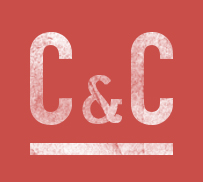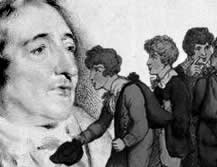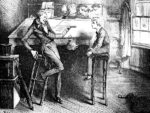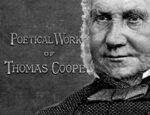Description
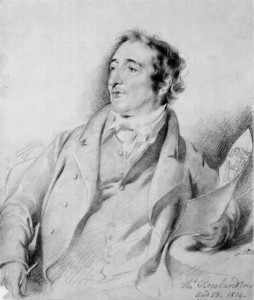 Meet Thomas Rowlandson and his poor country dame, whose class and gender exclude her completely from the charmed circle of men and youths acquainted with the Greek alphabet. In this humorous, beautifully hand-tinted engraving of 1809, an old peasant woman is complaining to a schoolmaster (who looks as though he would rather be asleep) about the behaviour of his pupils. They stand behind her, highly amused, and whispering to one another. The master asks her, ‘Good woman, you are always making complaints against my scholars; what have they done to offend you now?’ She explains the problem ‘Please your honour’s worship, they followed me up and down, and said one to another, at her, beat her, damn her, pelt her! and a great deal more that I do not recollect.’ The defence offered by the leader of the accused is this: ‘Indeed, sir, we were only repeating our Greek alphabet, in order to get it quite perfect; what the old woman heard was only Alpha, Beta, Gamma, Delta, and so on to the conclusion!’
Meet Thomas Rowlandson and his poor country dame, whose class and gender exclude her completely from the charmed circle of men and youths acquainted with the Greek alphabet. In this humorous, beautifully hand-tinted engraving of 1809, an old peasant woman is complaining to a schoolmaster (who looks as though he would rather be asleep) about the behaviour of his pupils. They stand behind her, highly amused, and whispering to one another. The master asks her, ‘Good woman, you are always making complaints against my scholars; what have they done to offend you now?’ She explains the problem ‘Please your honour’s worship, they followed me up and down, and said one to another, at her, beat her, damn her, pelt her! and a great deal more that I do not recollect.’ The defence offered by the leader of the accused is this: ‘Indeed, sir, we were only repeating our Greek alphabet, in order to get it quite perfect; what the old woman heard was only Alpha, Beta, Gamma, Delta, and so on to the conclusion!’
The cartoon can be read in several different ways. The joke may be entirely at the expense of the old woman, making fun of her ignorance of Greek. Or perhaps the idea is that the boys have indeed been bullying her, and have thought up the sort of excuse that they think their master would like to hear. On the other hand, some more cynical viewers might take away from the cartoon both the torpor of the teacher and the idea that the Greek alphabet is virtually meaningless to ordinary people as opposed to privileged boys.
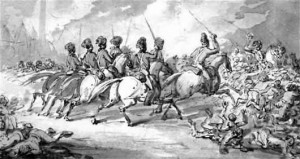 Rowlandson, born into a prosperous weaving family which went bankrupt in his childhood, did receive some education in the Classics as a pupil at Dr Barvis’ school in London’s Soho Square. His own dissipated lifestyle meant that he spent most of his own life in poverty, struggling to make a living as an artist and cartoonist. He did not often choose political topics, and yet his sympathies were firmly on the side of the underdog: one of his most famous drawings was his portrayal of the cavalry charging the crowd on the occasion of the Peterloo massacre.
Rowlandson, born into a prosperous weaving family which went bankrupt in his childhood, did receive some education in the Classics as a pupil at Dr Barvis’ school in London’s Soho Square. His own dissipated lifestyle meant that he spent most of his own life in poverty, struggling to make a living as an artist and cartoonist. He did not often choose political topics, and yet his sympathies were firmly on the side of the underdog: one of his most famous drawings was his portrayal of the cavalry charging the crowd on the occasion of the Peterloo massacre.
